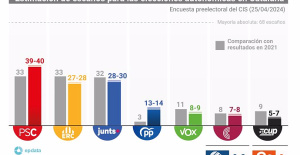interview with the NRK 21. may say FHIs leader Camilla Stoltenberg, that the control on the COVID-19-the infection might have been achieved without the extensive measures because reproduksjonstallet (R) was already decreased to around 1.1 right before 12. march. She emphasizes that there is great uncertainty around the number. Despite the uncertainty she uses the figure of 1.1 as an important argument that the closure was not necessary, and that FHI had the right in their recommendations whether or not to shut down Norway.
FHI-director Camilla Stoltenberg at the meeting with prime minister Erna Solberg and health and care services ms. Bent High 12. march. Photo: Heiko Junge / NTB Scanpix Show moreThis stands in clear contrast to the assistant director, Espen Rostrup Nakstad in the ministry of Health, which in Dagbladet 11. may say that it is before the 12. march was a theoretical possibility that one could go from 500 infected to a half a million infected in just over a month. This would not have been possible if the R had been 1,1.
Why is it important to gain clarity in what reproduksjonstallet was right before 12. march? Smittebegrensende action is about to get R down. If R the 12. march was only 1,1 and not around 3,1 which FHI has previously reported, it would have been sufficient with simple steps to get the R further down to 0.7 and the closure of the Uk would have been unnecessary.
Proving that the termination was necessaryWe don't have the answer to what R was in the days just before 12. march. What we want is to get clarity in how FHI have come up to the number of 1.1 and about these calculations is to rely on.
the Number R indicates how many individuals one infected person on average infects further. If the number is above 1, the pandemic quickly get out of control. If R is 2, will a infected person infecting 2 others, which in turn infects 4 new, 8, 16, 32, 64 o.s.v. This is what we now all know as exponential growth, and that happened in Norway before the 12. march. If R is below 1, will the epidemic die out as it has done in Norway since 12. march.
Norway registered approx. 300 new infected per. the day when the pandemic was at its highest at the end of march. At the time we tested only a small fraction of those with symptoms, so the real figures could have been much higher. We are now down to approx. 15 registered new infected per. day, i.e. a reduction of the infection in more than 95 percent since the measures began to work.
Sweden, which followed similar advice from statsepidemiolog Tegnell that the FHI gave the Norwegian government, has still a smittenivå over Norway was on top, and have over 4000 dead compared with Norway's 235 dead.
Turn On the LydErrorAllerede plus customer? Log into herError CORONA: the Los Angeles County Sheriff's Department have shared this video. Reporter: Madeleine Liereng / Dagbladet TV Show moreFHI calculates R on two different ways: Via Metapopulasjonsmodellen and EpiEstim. Metapopulasjonsmodellen use nyinnlagte in the hospital with COVID-19-diagnosis, as the data. Based on these data and transaction data for Norway, they calculate what smitteutviklingen was two weeks before. This is the calculation FHI attributes the most weight. FHI has chosen to calculate R, for three intervals, R0 from pandemiens the beginning to the and with 14. march, R1 from 15. march 19. april, and R2 from the 20. april to now.
R0, which also covers 12. march, is of FHI intended for 3,06, with a 95 per cent confidence interval from 2,56 to 3,51. The last means that FHI count it as 5 per cent likely that R0 is below 2,56 or over 3,51.
the Value of 1.1 for R the 12. march can be impossible to get from the Metapopulasjonsmodellen. It then remains only EpiEstim calculation as a candidate for the number of 1.1. And quite correctly, when one reads of the basket from the EpiEstim for 11. march gets you an R of approx. 1,1. Can we trust this calculation?
- Can burn out by itself,EpiEstim using as data only the number of positive COVID-19-test results. R is calculated from the change of the number of positive tests over time. As EpiEstim did not differ between the infected in Norway and those who were infected outside Norway, is the calculation of R in pandemiens first days directly error.
When the number of new infected coming into the country, increases over time, this leads to an increasing R, which remains far above 1, even though it has not happened a single local infection in Norway. And vice versa; when the number of people with infection from outside are less than a few days before, the R out from this model remain below 1, still without that it has been going on for a local infection in Norway. However, R should measure the local infection in the Uk, not the pace of change in the imported infection.
the City where "everyone" is infectedFHIs beregningsgruppe describes this clearly in his research report from 22. may: ” The analysis of laboratory-confirmed cases does not take into account the effect of imported cases during the early outbreak in Norway; the early results are less reliable than the pretend results when the impact of importactions is negligible ”.
When the share of imported infection is neglisjerbar, will EpiEstim be a good tool to calculate the R, but not before. For example, gave EpiEstim a value for R of 0.7 18. February, which is a meaningless result because no smittebegrensende measures were initiated then.
We presented as smittebomber DebateNumber of 1.1 for R the 12. march from EpiEstim says so very little about the local infection in Norway at the time.
This must be well known for Camilla Stoltenberg. Nevertheless, she chooses to use this figure in his argument that the closure of the Uk was unnecessary. We look forward to a clearing where the figure of 1.1 comes from, and how it is possible on the basis of this calculation to conclude that the closure of Norway 12. march was not necessary.
Beat the alarm: - all of The self
Want to discuss?
Visit Dagbladet debate!
 Exploring Cardano: Inner Workings and Advantages of this Cryptocurrency
Exploring Cardano: Inner Workings and Advantages of this Cryptocurrency Seville.- Economy.- Innova.- STSA inaugurates its new painting and sealing hangar in San Pablo, for 18 million
Seville.- Economy.- Innova.- STSA inaugurates its new painting and sealing hangar in San Pablo, for 18 million Innova.- More than 300 volunteers join the Andalucía Compromiso Digital network in one month to facilitate access to ICT
Innova.- More than 300 volunteers join the Andalucía Compromiso Digital network in one month to facilitate access to ICT Innova.-AMP.- Ayesa acquires 51% of Sadiel, which will create new technological engineering products and expand markets
Innova.-AMP.- Ayesa acquires 51% of Sadiel, which will create new technological engineering products and expand markets A Commission created by the CSD will supervise the RFEF
A Commission created by the CSD will supervise the RFEF The AN judge prosecutes the former ETA leader for her responsibility in the kidnapping and murder of Miguel Ángel Blanco
The AN judge prosecutes the former ETA leader for her responsibility in the kidnapping and murder of Miguel Ángel Blanco The European Parliament condemns the contacts of the Catalan independence movement with Russia and demands an investigation
The European Parliament condemns the contacts of the Catalan independence movement with Russia and demands an investigation The PSC would win the Catalan elections with 39-40 seats, Junts would obtain 28-30 and ERC 27-28, according to the CIS
The PSC would win the Catalan elections with 39-40 seats, Junts would obtain 28-30 and ERC 27-28, according to the CIS How Blockchain in being used to shape the future
How Blockchain in being used to shape the future Not just BTC and ETH: Here Are Some More Interesting Coins Worth Focusing on
Not just BTC and ETH: Here Are Some More Interesting Coins Worth Focusing on Retrópolis brings the golden age of video games and computing to the UPV
Retrópolis brings the golden age of video games and computing to the UPV Looking for video games that value the neighborhoods of Valencia
Looking for video games that value the neighborhoods of Valencia UPV researchers improve the efficiency of air conditioning systems using a geothermal heat pump
UPV researchers improve the efficiency of air conditioning systems using a geothermal heat pump València is committed to citiverse and smart tourism to be "the reference technological hub of the Mediterranean"
València is committed to citiverse and smart tourism to be "the reference technological hub of the Mediterranean" A million people demonstrate in France against Macron's pension reform
A million people demonstrate in France against Macron's pension reform Russia launches several missiles against "critical infrastructure" in the city of Zaporizhia
Russia launches several missiles against "critical infrastructure" in the city of Zaporizhia A "procession" remembers the dead of the Calabria shipwreck as bodies continue to wash up on the shore
A "procession" remembers the dead of the Calabria shipwreck as bodies continue to wash up on the shore Prison sentences handed down for three prominent Hong Kong pro-democracy activists
Prison sentences handed down for three prominent Hong Kong pro-democracy activists ETH continues to leave trading platforms, Ethereum balance on exchanges lowest in 3 years
ETH continues to leave trading platforms, Ethereum balance on exchanges lowest in 3 years Investors invest $450 million in Consensys, Ethereum incubator now valued at $7 billion
Investors invest $450 million in Consensys, Ethereum incubator now valued at $7 billion Alchemy Integrates Ethereum L2 Product Starknet to Enhance Web3 Scalability at a Price 100x Lower Than L1 Fees
Alchemy Integrates Ethereum L2 Product Starknet to Enhance Web3 Scalability at a Price 100x Lower Than L1 Fees Mining Report: Bitcoin's Electricity Consumption Declines by 25% in Q1 2022
Mining Report: Bitcoin's Electricity Consumption Declines by 25% in Q1 2022 Oil-to-Bitcoin Mining Firm Crusoe Energy Systems Raised $505 Million
Oil-to-Bitcoin Mining Firm Crusoe Energy Systems Raised $505 Million Microbt reveals the latest Bitcoin mining rigs -- Machines produce up to 126 TH/s with custom 5nm chip design
Microbt reveals the latest Bitcoin mining rigs -- Machines produce up to 126 TH/s with custom 5nm chip design Bitcoin's Mining Difficulty Hits a Lifetime High, With More Than 90% of BTC Supply Issued
Bitcoin's Mining Difficulty Hits a Lifetime High, With More Than 90% of BTC Supply Issued The Biggest Movers are Near, EOS, and RUNE during Friday's Selloff
The Biggest Movers are Near, EOS, and RUNE during Friday's Selloff Global Markets Spooked by a Hawkish Fed and Covid, Stocks and Crypto Gain After Musk Buys Twitter
Global Markets Spooked by a Hawkish Fed and Covid, Stocks and Crypto Gain After Musk Buys Twitter Bitso to offset carbon emissions from the Trading Platform's ERC20, ETH, and BTC Transactions
Bitso to offset carbon emissions from the Trading Platform's ERC20, ETH, and BTC Transactions Draftkings Announces 2022 College Hoops NFT Selection for March Madness
Draftkings Announces 2022 College Hoops NFT Selection for March Madness



























